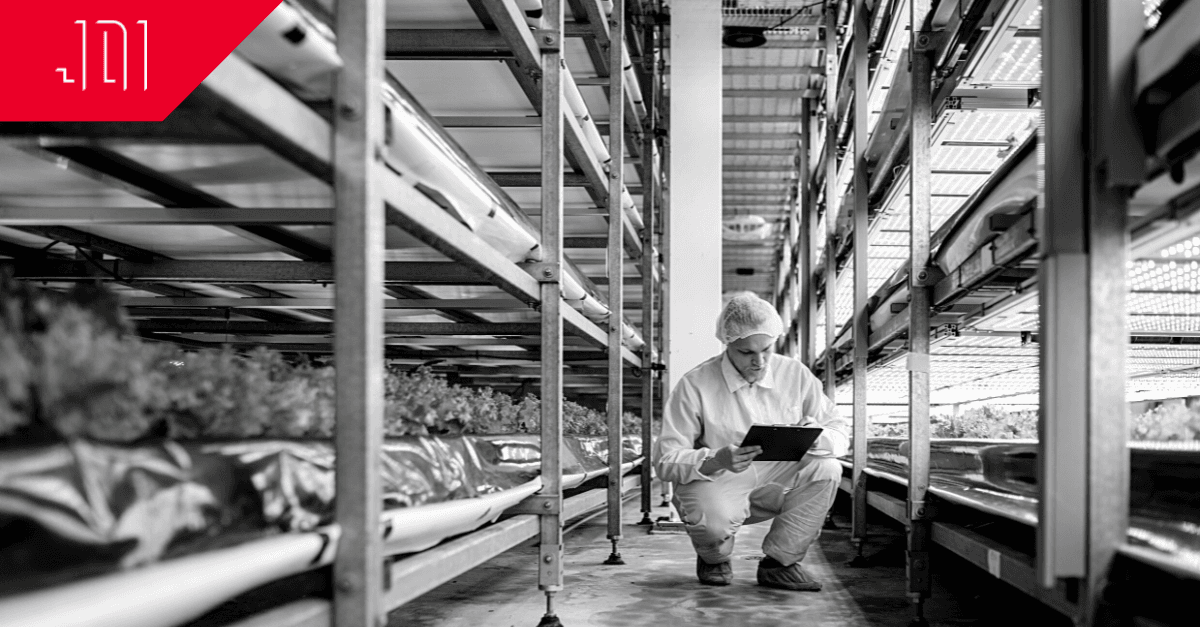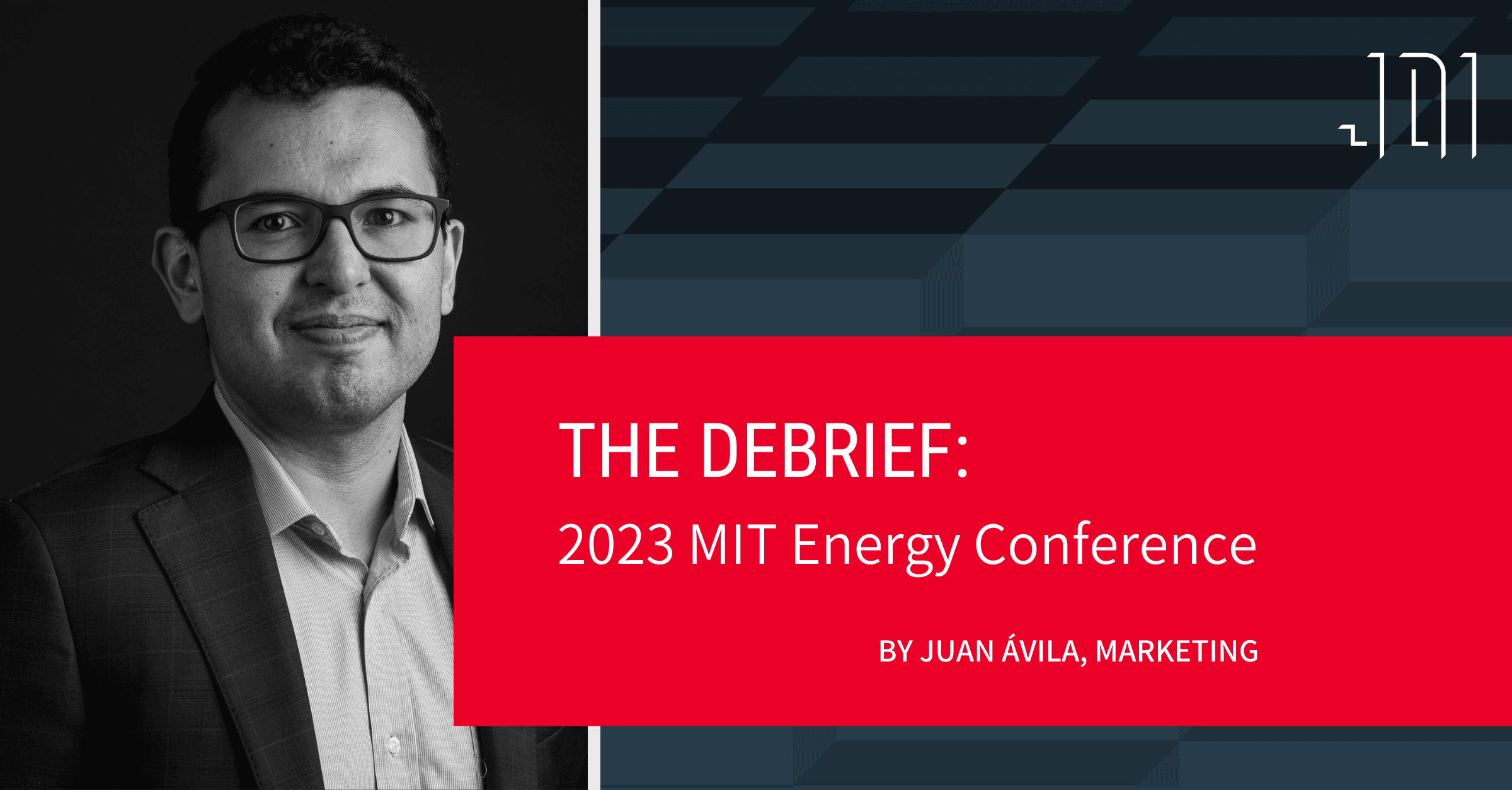Q&A with Dr. Girish Chowdhary
Tell us about yourself – what is your background in and how did you end up in your current position?
Currently, I am a professor of computer science and agricultural and bioengineering at the University of Illinois at Urbana-Champaign. I’m also a co-founder of a startup called EarthSense, which I started in 2016 with my very good friend Chinmay Soman. I am formally trained in robotics, and have done a lot of research in the industry. I have served as a consultant with other robotics companies in the past, and I have set myself on this path of trying to bring agricultural robotics to the public.
I’ve found myself with this as my mission in life, because it's an area where robotics can make a tremendous impact, and it's also an area where we really need some technological help to get out of the sustainability issues that we are stuck in right now. Myself and the people that I work with are using technology as a force to make agriculture more sustainable, more climate-friendly, and heal the planet.
Tell us about some of your current research programs and some of the work you’re doing?
I am the Director of two different United States Department of Agriculture funded programs here at Illinois: the Farm of the Future project, and the iCOVER project. The Farm of the Future is assessing how AI, remote sensing and edge computing can integrate into the world of agriculture, and how to break down the socioeconomic barriers that might disincentivize their adoption. On the other hand, the iCOVER project, whose funding was recently announced by the Biden-Harris administration, is bringing more accessible cover-cropping techniques to farmers. For the University, I am also the director of the Field Robotics and Engineering Sciences Hub, or FRESH, formerly known as the Distributed Autonomous Systems lab.
I believe that the industry follows the tried and tested routes for spinning up a new project, but faces some unique challenges. Traditionally, you start in academia, do some very good research, and hopefully some company will take that research, and make it into a product. The other route is you go to industry, and look for an interesting idea, innovate on it, and bring a new product to market. Both of these have seen great success throughout history and led to many profound impacts. Machine learning is a great example of this, and we have a great competition between industry and academia for general language models.
However, I found that this only works for established markets. For agriculture, it's two things at the same time – you want to generate new ideas, but also want to bring them directly to people, so that they can see the value in them. Just writing a paper doesn’t communicate with an end user, and oftentimes drives them further away. Instead, I’m trying to take a more complete approach. The first pillar is engaging with students and research in the lab, publishing papers and graduating extremely talented people with PhDs. The second pillar is at EarthSense, creating robots with brand-new applications, building systems and constantly improving on execution. The final pillar is through innovation, where we take existing platforms and connect them to agriculture. Through the Center for Digital Agriculture, we work with satellite imaging, remote sensing, and network connectivity, and see how we can get it deployed in both remote and minority farms. We want to build out the ecosystem for innovation, and make sure that we have that crucial impact.
Today’s corn, soybeans, cotton etc. aren’t what you would really call naturally occurring crops. They were, over the course of many, many years, were selectively bred by a number of different peoples, and more recently by a host of modern companies around the world. Their work is truly impressive, right? They have dramatically improved yield, but have created a reliance on herbicides, nitrogen spraying and pesticides to keep production running. This has created a roughly 200 million acre monoculture across the Midwest, which just isn’t sustainable.
Cover crops are one of the silver bullets we have to rescue corn and soybean farming. Cereal rye helps absorb excess nitrogen, and returns back to the soil when it is terminated. Turnips can break up soil compaction, and Hairy Vetch fixes for nitrogen, reducing fertilizer demand. All cover crops also help with carbon sequestration, and because the soil is already occupied, reduce the need for herbicides. The problem is, we don’t really have a gun to fire it out of, so to speak. Cover crops are currently planted post-harvest, which in the northern parts of the United States, it can be very cold and difficult to get planting equipment out into the field. There are methods, like broad spraying and application that can plant cover crops before harvest, but you risk losing or damaging the primary crop.
The iCOVER project, through funding from the Biden-Harris administration, is a widespread test of robotics in cover cropping. Using EarthSense robots, we aim to plant 10,000 acres per year by the end of the program. Farmers will opt in to the completely free program, and will have cover crop seeds applied to select fields. We also have created partnerships with climate-conscious commodity buyers so that farmers can sell their final product at a premium. Our ultimate goal is to reduce the cost of cover cropping from $20 an acre to $10 per acre, and have a more broad window for their application by using a more direct method. If we can deliver on that goal, we believe that there will be opportunities for cover cropping as a service – either from a co-op, ag retailer, or a specific company.
What is machine vision and how is machine learning improving wayfinding?
Large farm equipment today rely on Global Navigation Satellite Systems, otherwise known as GNSS or GPS. Things like tractors go in very simple and predetermined directions, in a very on-the-rails approach. This is fine if there is a clean path for it to follow, but what happens when conditions change, and there is a ditch or something falls into its way? Equally, what happens when your machine is much smaller, and operates underneath the canopy where GNSS positioning is much less reliable?
Most people are familiar with Roomba, the consumer robots, and their approach to wayfinding. They build a map of the space they occupy, either with range finders or with physical sensors by bumping into your sofa or table. A Roomba relies on a space that only sometimes changes: most people don’t reorganize their furniture. The rangefinder can detect small obstacles or obstructions that change within a space, like with pets or from your children, but cannot differentiate between them.
For our approach, we give the robots eyes using multiple cameras, and teach them how to get around. Using AI, we let the robots detect objects and let them determine if they are traversable or not. We built our models with the goal of being robust to distribution shift – this idea that your data set is never truly complete and will grow over time. This self-supervised style of learning helps to build better and stronger results in real world situations, and doesn’t rely on enterprise GNSS licensing for field applications.
For the near future, we want to work on making our robots more independent and efficient in the field. For purpose-built robots like at EarthSense, we need to be very tactical when our robots are at work. Our eventual goal is for 80 acres in 5 hours with 5 robots, at about a 3 mph planting speed. This has to happen reliably, over and over again on the 200 million acres of corn and soybean. Getting to this reliability at scale is where the key challenges are.
What breakthroughs are you excited about in the field of robotics?
I’m quite excited about what happens as advances in AI are allowing robots to work with less and less structure from the environments robots work in. For autonomous cars, the AI powering them makes a lot of assumptions about the conditions they operate in. That the surface is nice and smooth, or that there are neat lines and that they can stay behind the car that is in front of them. The real world off-road is far more messy, and those assumptions don’t hold true; worse yet, they work sometimes but not at others.
One of the ideas that we recently patented and wrote about is this concept of “seeing and driving”. Our robots are frequently on dirt or gravel, but when they encounter grass, sometimes the sensors will tell the robot to not go there. Even when they know that they won’t lose traction, they still will not go on grass. Conversely, sometimes they were confronted with snow. We both know, through learning or first hand experience, that you often skid and slide when you drive on the snow. The sensors in this case see it as a smooth and even surface, and the robot wants to take that path. We have developed ways where the robot learns to avoid such paths where it may lose traction. I’m looking forward to when autonomous robots – or cars – are more ready to tackle all obstacles.
For something that is a bit closer to the horizon is going to be reducing the cost of robots. Part of that is tied to scale, and generating a market and industry around robotics. Once the demand is there, hopefully, the production will increase and cost will decrease. I have worked with unmanned aerial vehicles (UAVs) recently, and we were able to replicate imaging from a $5000 infrared camera using a $30 sensor using AI. So the other alternative is repurposing the technology we have to be more efficient, and get more mileage out of what we currently have available to us.
There are plenty of other topics too, like network connectivity in rural areas, getting robots to be able to better manipulate objects, working and integrating with animals and livestock – the list goes on. There will be plenty of work for the rest of my life, and plenty of other people’s lives too. These are the types of technologies we are trying to mature and showcase at UIUC’s USDA funded Farm of the Future site.
To everyone, not just the young students looking for jobs or the investors looking for the next big thing, we need to move beyond the push for immediate consumerism, and ask ourselves how we can heal the planet and make the world a better place. There is an immense untapped market for sustainability, no more so than in agriculture. Everyone has to eat, and why not do so in a way that is good for you and better for the planet.
We are living in a supermarket society, and I would love to inspire people to do more. There is a disconnect between people and their food – my daughters thought that chicken comes out of the fridge, and milk comes out of a carton until I took them to a farm. I think we need to think more carefully about where our food comes from, the impact our food has, and work to create technologies to help us. The abundance of food has gotten us here, and now it's time for the abundance to give back.




